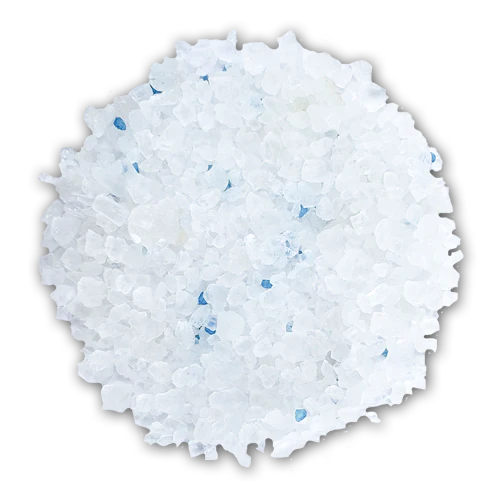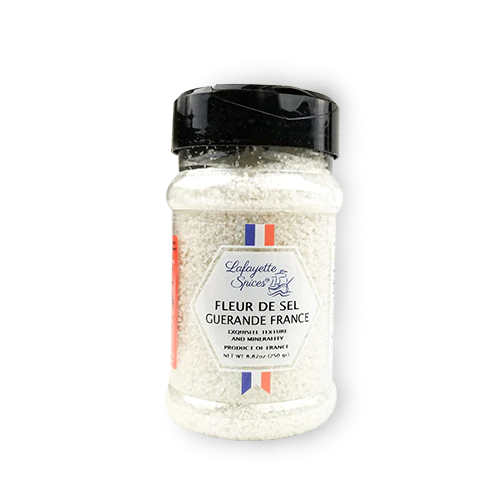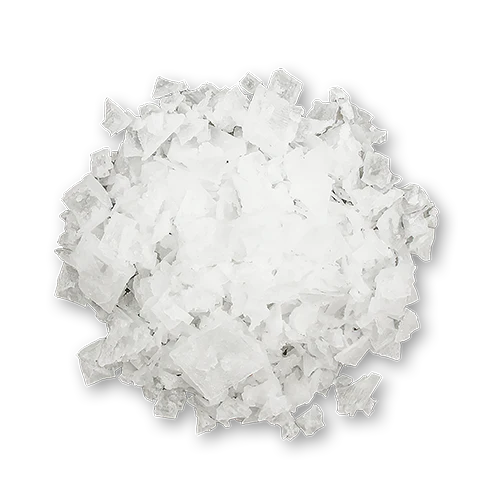
Sichuan Green Peppercorns: Spruce up Your Desserts with Sichuan Spices
The Allure of Sichuan Green Peppercorns in Desserts is really indescribable.
In the modern lexicon of dessert making, there aren’t a whole lot of spices used. Maybe the occasional use of “fall spices” like cinnamon, nutmeg, and clove. But really aside from that, it’s rare to see them used.
Even more so when it comes to plated desserts at fine-dining restaurants. More often, even these fall spices are reserved for baking projects like cakes and pies. Vanilla might be the one seasoning that’s ubiquitous across the pastry spectrum regardless of what exactly is being made. It seems to go in just about everything.
But that gets boring after a while doesn’t it? Where’s the excitement?!
Savory cuisine has spice after spice at their fingertips. Flavors from far-flung places in just about every taste profile you can imagine. Why doesn’t Pastry have a similar portfolio to pull from?
Here we'll delve into the intriguing world of peppercorns Szechuan and their surprising versatility. Uncover the secrets behind this culinary sensation. Learn how to infuse ground Sichuan peppercorn into your sweet creations while maintaining a perfect balance of flavors.
What Makes Sichuan Green Peppercorns Special?
Peppercorns Szechuan are truly exceptional. Their uniqueness stems from a combination of factors that set them apart in the world of spices and flavor.
But what exactly makes the Sichuan Green Peppercorn so adaptable?
For starters, the peppercorns are sourced from China – which is no surprise seeing as how it’s the signature spice of China’s southwestern Sichuan province. When eaten, it produces a numbing tingling sensation – due to the presence of hydroxy-alpha sanshool.
This molecule is found naturally in plants from the genus Zanthoxylum. Sichuan Green Peppercorn has loads of it! Sichuan Peppercorns have been used in China for centuries for both culinary and medicinal purposes.
As an herbal remedy, it’s prescribed for various ailments from abdominal pain to toothache. It’s been said to have anti-inflammatory, antioxidant, and antibacterial effects.
The appearance alone is totally bizarre. Tiny green bumpy pods look more like something from a ’90s arcade game than something you should be eating. And the flavor is out of this world—bright herbal citrus notes like lemon, lime, yuzu, and grapefruit. Instead of the typical spicy burn, your tongue is treated to a range of tingling and numbing sensations. The peppercorns will instantly increase saliva production too. It’s really quite pleasant and enjoyable.
Well, that’s not it. We've got more dessert spices than a sprinkle-loving wizard's pantry! Or infamous Sichuan Green Peppercorns. So, if you're feeling extra adventurous, check them out.
Check Out These Flavorful Superstars For Your Dessert! |
|||
|---|---|---|---|
|
|
Flavor: Salt, Cabernet Wine Use: Grilled Meats, Roasted Veggies, chocolate, Fruit Pie |
|
|
|
|
Flavor: Sweet, Fruity, notes of Juniper Use: Roasted Veggies, Grilled Meats, Dessert |
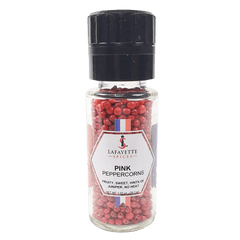 |
|
|
|
Flavor: Crunchy and Floral Use: Game Meats, Seafood, Cocktails, Desserts |
 |
Order Now |
| Timut Peppercorns |
Flavor: Citrus Notes, Grapefruit, Slightly Tingling Use: Seafood, Dessert, Drinks |
 |
Order Now |
| True French Lavender Flowers |
Flavor: Lavender Use: Cocktails and Dessert |
 |
Order Now |
| Kampot Long Red Peppercorns |
Flavor: Spicy, hints of clove, cinnamon, and dried fruit Use: Salads, Meats, Pâtés, Fruits |
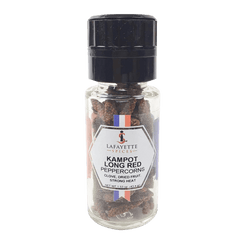 |
Order Now |
| Lemon Pyramid Salt |
Flavor: Crunchy and Lemony Use: Seafood, Poultry, Dessert |
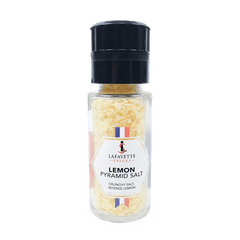 |
Order Now |
Alrighty then, you're in for a real treat! You'll get to dive headfirst into all the nitty-gritty details in just a bit. So, keep those peepers glued to the page and let's embark on this flavorful adventure together! 😋
Varieties and Flavor Profile of Sichuan Green Peppercorns
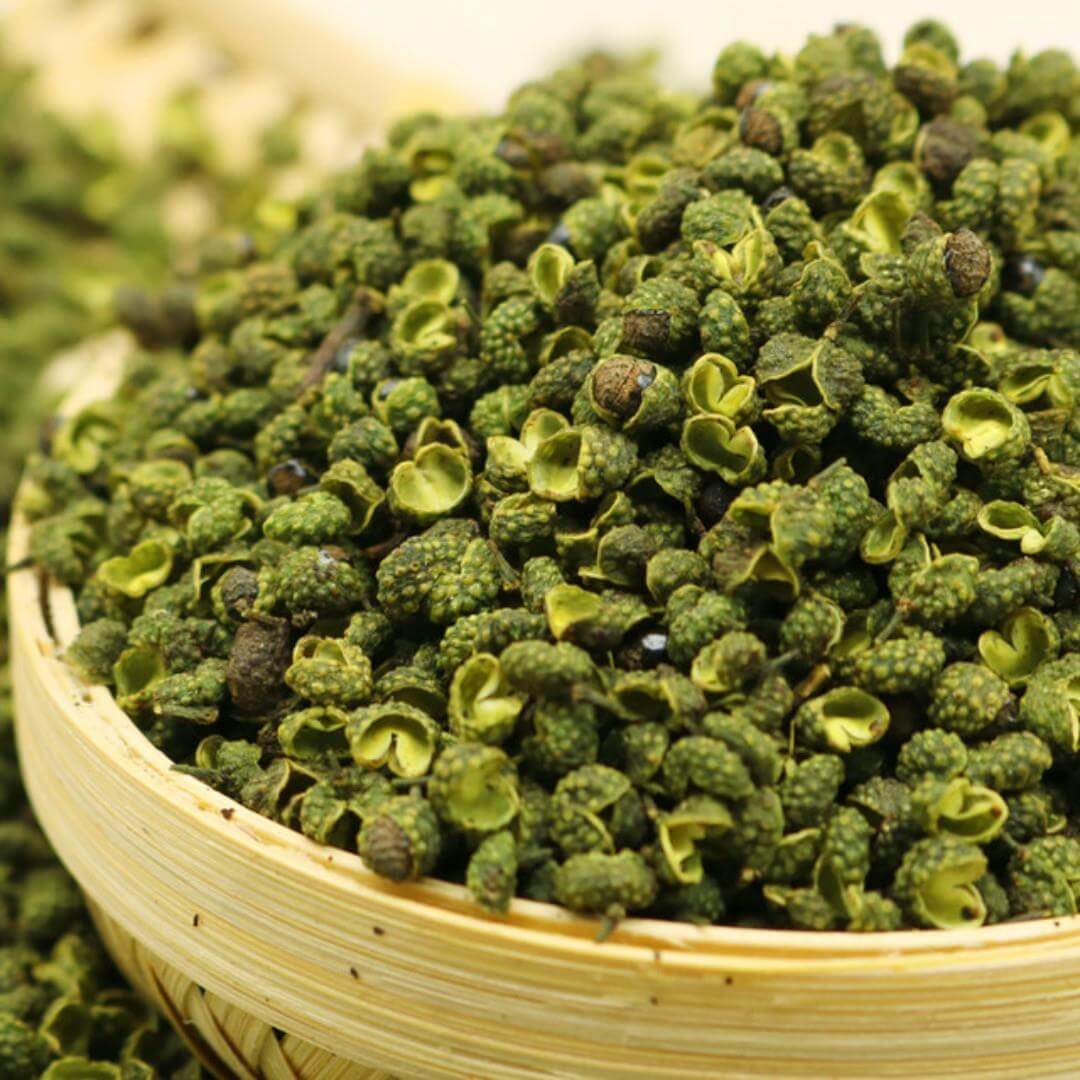
Sichuan peppercorns are also known as Szechuan peppercorns. They are a close relative of Zanthoxylum Simulans. Hua Jiao tends to be larger in size and has a slightly different flavor profile. They are often described as more robust and earthy compared to the former.
Flavor Profile of Sichuan Green Peppercorns:
Citrusy:
Sichuan peppercorns have a strong citrus-like aroma. It adds a bright and refreshing quality to dessert spices.
Numbing Sensation:
One of the most distinctive features of Sichuan peppercorns is their numbing effect on the mouth. It doesn't produce a spicy heat but rather a tingling, numbing feeling that complements the flavors in desserts.
Peppery:
Despite not being true peppercorns, Sichuan green peppercorns have a peppery undertone. It combines with the numbing sensation to create a complex flavor experience.
Slight Floral Notes:
Some people detect subtle floral notes in Sichuan peppercorns. It can vary depending on the specific variety and freshness of the peppercorns.
Earthy or Woody:
Depending on the variety, Sichuan peppercorn may also have earthy or woody undertones, adding depth to their flavor.
Spicy Aroma:
When heated or toasted, Sichuan peppercorns release a spicy aroma. That enhances the overall flavor of a dessert.
Because of their unusual flavor, the peppercorns lend themselves to some really unusual applications. Namely, pastry. Their citrusy notes and tingling characteristics make them perfectly suited for sweet dessert spices and after-dinner bites.
Sichuan Dessert Ideas and Techniques for Infusing Sichuan Green Peppercorns Flavor

What truly elevates a dessert from ordinary to extraordinary is the art of infusing flavor. Sichuan Green Peppercorns hold the potential to elevate your desserts to a whole new level. Get ready to redefine your Sichuan desserts.
Crème Brûlée with Sichuan Green Peppercorns
Grind Sichuan spices into a fine powder and mix it with granulated sugar. This flavored sugar can be used as a topping for various desserts like crème brûlée. The combination of the numbing ground Sichuan peppercorn and sweet sugar adds an exciting twist to classic desserts.
Mango and Green Peppercorn Recipe
One of our favorite combinations includes mango sorbet. The finished dish can be as simple as great mango sorbet and the crushed peppercorn. Or it can be jazzed up with cookie crumbles, fresh sliced mango, sauces, you name it.
Fantastic mango sorbet is easy to make and starts simply with really fresh ripe mangoes.
Take two pounds of fresh sliced mango and blend in a blender with ¼ cup water. Strain the mixture through a fine mesh strainer. You should have about 3 cups of puree. To the puree, whisk in ¾ cup sugar, 1 tsp lime juice, and ½ tsp salt. Chill the entire combination until very cold, then churn in an ice cream maker. It’s as easy as that!
The bright citrusy notes of the Sechuan Green Peppercorn mingle beautifully with the cold tropical mango and will have you going back for bite after bite. For an added adult take, add a splash of dark Jamaican rum to the sorbet bowl. You won’t regret it.
Sichuan Green Peppercorn as Garnish
Crush Sichuan pepper and use it as a decorative garnish on top of desserts. Like chocolate truffles, cakes, or tarts. The visible peppercorn specks not only add visual appeal but also hint at the unexpected flavor within.
Key Lime pie with Sichuan Green Peppercorns
Creating a Key Lime Pie with Peppercorn Sichuan is a fusion of zesty citrus and the subtle numbing heat. This fusion dessert adds a delightful experience for your palate. The marriage of tartness and gentle heat promises a tingling surprise in every bite.
Other Favorite Seasonings for Desserts
Expanding your palate to include unique seasonings and spices in desserts. They can lead to exciting and unexpected flavor profiles other than peppercorns Szechuan. Here are some favorite seasonings and spices often used in desserts:
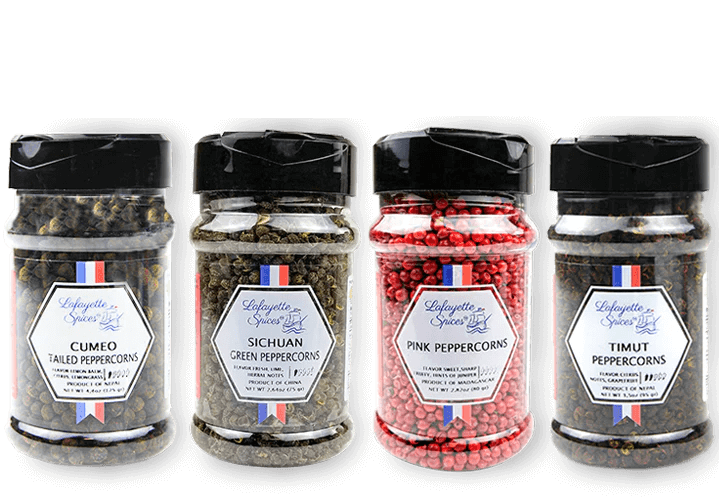
Cabernet Salt (France):
Cabernet salt is a delightful fusion of sea salt and Cabernet wine. It originates from the wine regions of France and brings the deep, complex flavors of red wine to your desserts. The salt crystals absorb the wine's rich essence during the aging process.
Creating a sweet and slightly fruity salt with a subtle, earthy undertone. It's an excellent addition to chocolate-based desserts and caramel sauces. Or even sprinkled on top of dark chocolate truffles.
Cumeo Tailed Peppercorns:
Cumeo tailed peppercorns are a rare and visually striking variety of black peppercorns. They are known for their long, thin tails that resemble the tail feathers of a bird.
These peppercorns possess a citrus and lemongrass flavor. When crushed or ground, they add a bold, aromatic kick to desserts. Try them in fruit-based desserts like poached pears. Or as a garnish for creamy desserts like panna cotta.
Pink Peppercorns:
Pink peppercorns are not true peppercorns but rather dried berries from Madagascar. They have a sweet and fruity flavor with juniper notes. Pink peppercorns add a delicate and fruity kick to desserts.
They work beautifully in fruit salads, on top of vanilla ice cream, or as part of a pink peppercorn-infused caramel sauce for a unique twist on traditional desserts.
Pink Himalayan Salt with Roses:
This exquisite seasoning combines the delicate pink Himalayan salt with dried rose petals. The result is a visually stunning and fragrant seasoning. They impart a subtle floral aroma to your desserts.
It can be used as a finishing touch on chocolates, truffles, or shortbread cookies. Adding both a hint of saltiness and a touch of floral sweetness.
Timut Peppercorns:
Timut peppercorns, also known as Nepali pepper. They have a distinctive flavor profile with bright, zesty, and grapefruit-like notes. They bring a unique citrusy spice to desserts.
Try them in citrus-based desserts, such as lemon tarts or orange sorbets, to enhance the fruit flavors. And provide a pleasant, tingling sensation on the palate.
True French Lavender Flowers:
True French lavender flowers are known for their aromatic and soothing qualities. When used sparingly in desserts, they impart a subtle lavender aroma. And a slightly herbal, floral taste. Lavender pairs wonderfully with lemon-flavored desserts, shortbread cookies, and custards. It can add a touch of elegance and a hint of Provence to your creations.
Pyramid Salt:
Pyramid salt, also known as pyramid-shaped salt flakes. It is visually striking due to its unique crystalline structure. These delicate flakes provide a delightful crunch and a mild salinity to desserts. Use them to garnish chocolate mousse, caramel, or salted caramel brownies. The pyramid-shaped flakes create a beautiful texture contrast.
Kampot Long Red Peppercorns:
Hailing from Cambodia, Kampot long red peppercorns are known for their bold, spicy, and slightly cinnamon flavor. They have a warm heat that pairs well with dark chocolate desserts. They are also great with pineapples and mangoes. Use them as a finishing touch for an intriguing and aromatic twist.
Lemon Pyramid Salt:
Lemon pyramid salt combines the zesty brightness of lemon zest with the crystalline texture of salt flakes. It adds a burst of citrusy freshness to desserts. Sprinkle it on lemon bars, sugar cookies, or fruit salads for a refreshing and tangy contrast.
It's also a lovely addition to rim the glass of a dessert cocktail for a citrusy kick.
Modern Fusion of Spices in Dessert Culture
Modern fusion in dessert culture represents a delightful marriage. It is a dynamic and innovative approach to creating sweet treats that transcend traditional boundaries. Resulting in unique, exciting, and sometimes unexpected dessert experiences.
This phenomenon has gained significant popularity in recent years as chefs. Food enthusiasts seek to push the boundaries of what dessert can be.
Cultural Diversity:
One of the defining characteristics of modern fusion desserts is the celebration of cultural diversity. Chefs draw inspiration from various cuisines. Such as Japanese, French, Italian, Indian, and more. It creates desserts that incorporate flavors, ingredients, and presentation styles from different parts of the world.
This blending of cultures adds a global flair to dessert menus. Making them more inclusive and appealing to a diverse clientele.
Global Spice Exploration:
Modern fusion desserts draw inspiration from a wide range of global cuisines. Chefs and bakers experiment with spices from various cultures. Such as Indian cardamom, Mexican chili, Peppercorn Sichuan, Middle Eastern saffron, and Chinese five-spice. This global spice exploration adds depth and complexity to dessert menus.
Balancing Sweet and Savory:
Fusion desserts often play with the balance between sweet and savory flavors. Spices like cayenne pepper, black pepper, and smoked paprika are used to add a hint of heat and a savory contrast to sweet elements.
For example, a Sichuan Pepper dessert or a cardamom-scented fruit salad can be a delightful surprise.
Texture and Temperature Play:
Modern fusion desserts frequently incorporate spices in innovative ways to manipulate texture and temperature.
For instance, spices like green peppercorn and nutmeg can be used to create crunchy, spiced coatings for desserts. Liquid nitrogen may be employed to freeze spice-infused components for a unique mouthfeel.
Unexpected Pairings:
Spices are paired with unexpected ingredients to create harmonious flavor profiles. Think of rosemary-infused caramel, basil, and strawberry compote, or coriander-crusted pastries. These combinations challenge traditional notions of what works in dessert, often with delightful results.
Infused Sugars and Syrups:
Spice-infused sugars and syrups are commonly used in modern fusion desserts. These preparations allow for precise control of spice intensity and flavor infusion.
Vanilla bean and cardamom-infused sugar, for instance, can impart a subtle and aromatic sweetness to pastries and cakes.
Visual Appeal:
Spices also contribute to the visual appeal of modern desserts. Chefs use colorful spices like saffron, turmeric, and matcha to create vibrant and visually striking desserts. The bright hues not only add aesthetics but also intrigue diners.
Cultural Storytelling:
Some fusion desserts aim to tell a cultural or regional story through spice selection. For example, a dessert featuring Sichuan peppercorns might evoke the flavors of China. While a dessert with cinnamon and clove might transport diners to the holiday season. This storytelling enhances the overall dining experience.
Sichuan Green Peppercorns in Chinese Dessert Traditions
Sichuan green peppercorns hold a special place in Chinese dessert traditions. This uniquely flavored spice is renowned for its numbing and spicy taste, as well as its delightful aroma. The history of green peppercorns can be traced back to ancient China. Where they were an integral part of many Sichuan dishes and cuisines. However, in recent years, they have also made their way into Chinese dessert culture. The idea of using Sichuan pepper dessert might come as a surprise. But it adds new layers and excitement to traditional sweetness.
In Chinese desserts, Sichuan peppercorns are used in various ways. They can be incorporated into fillings, adding a subtle hint of spiciness to traditional pastries and dumplings.
Additionally, some innovative pastry chefs incorporate ground Sichuan peppercorn into the dough itself. Creating exciting flavor combinations.
Whether used in fillings or dough, green peppercorns bring a unique numbing and spicy flavor to desserts.
Green peppercorns not only play a significant role in taste but also visually enhance desserts. Their color is often used to garnish various sweets like pastries, ice creams, and fruit salads. Giving these delicacies a visually appealing aspect.
The inclusion of Sichuan green peppercorns aligns with the traditional Chinese culinary emphasis on balance and harmony of flavors. In traditional Chinese food philosophy, the five tastes of sour, sweet, bitter, spicy, and salty should be balanced and harmonious to achieve a perfect palate.
Therefore, despite bringing spiciness, green peppercorns meld with other flavors in desserts. Creating a unique taste experience that attracts a growing number of food enthusiasts.
Conclusion
Sichuan green peppercorns offer an enticing and unconventional avenue for culinary exploration. Particularly in the realm of desserts.
Embrace the adventure. Play with flavors. Let your taste buds dance to the unique tune of these little green gems.
Your desserts may just surprise and delight your guests in ways they never expected. So, go ahead and infuse little Sichuan peppercorns flair into your next sweet creation!






